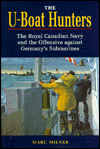Escapes
Without question, the central issue which most concerned the War Department with regard to prisoners of war was the very reasonable fear of mass escapes. From the moment that the first shiploads of hardened German captives arrived in November, 1942, the government was haunted by the specter of thousands of escaped Nazi prisoners sabotaging and raping their way across the United States while American military forces were locked in combat overseas. As a result, Washington intended to leave little to chance in the area of POW security. Elaborate precautions were taken in the location and construction of the camps, and all participating American military personnel were continually reminded by the steady flood of regulations and memos that the prevention of escape was their highest priority concern. To that end, camp commanders were encouraged to find the most efficient balance of security measures from among such options as additional floodlights, patrolling war dogs, the censoring of prisoner mail, sporadic bed checks, the creation of prisoner informants, shakedown inspections, and a general aura of firm military discipline. Since each camp had different characteristics and problems, the security measures adapted by one commander would seldom be applicable at another camp, and as a result, the procedures required to maintain control varied widely from camp to camp. Regardless of these differences, it quickly became apparent that these security measures were more than adequate to control the thousands of incoming enemy soldiers. Escapes, in fact, occurred infrequently, most large camps experiencing no more than three or four such events during the entire war. The War Department's fears gradually melted away.
The Factors and Statistics of Escape
In addition to a wide variety of security measures, the War Department was pleasantly surprised to find that three major factors worked in its favor. The incoming prisoners were still harnessed to the internal hierarchy of their army, despite their new surroundings. Washington was relieved to find that it was not faced with chaos of hundreds of thousands of uncontrollable individuals but rather with a tightly obedient military unit in which each rank was responsible for its actions to its direct superior. The best way to handle the prisoners, therefore, was to turn their control over to themselves, and hope that the senior officers could be influenced to keep the lower ranks orderly. While this tactic led, unfortunately, to the inadvertent strengthening of German militarism and Nazism inside the camps, it proved very helpful in defusing the looming threat of random escapes.
The second unexpected ally in the War Department's security efforts was the comprehensive recreational and educational program and the immediate attraction of these opportunities to incoming prisoners. The dazzling array of artistic, musical, athletic, educational, and spiritual outlets provided by the War Prisoner's Aid Committee of the YMCA, the National Catholic Welfare Council, and International Committee of the Red Cross, as well as by the War Department and the prisoners themselves, produced a strenuous recreational program which occupied much free time which otherwise would have been spent in less desirable pursuits.
The third and final obstacle to escape was the realization by the incoming prisoners that there was simply no place to go. The most elemental grasp of geography indicated the very limited number of options: north or south would bring the escapee to the well-scrutinized borders of Canada or Mexico, and east or west would bring him only as far as the beaches of the Atlantic or Pacific oceans. Moreover, the long train rides which had transported the POWs across the country from the docks to their new camps showed the startled foreigners that, regardless of the direction in which they escaped, the distances involved would be substantial. Even if they did escape, they certainly could not rely upon many sympathetic American civilians for help.
Yet such logic did not prevent a number of enemy captives from attempting to escape, and while these constituted less than one percent of the 360,000 German prisoners in the United States, they were generally motivated by factors far less sinister than the compulsion to rape, pillage, or sabotage. The first such reason for escapes, in fact, was that it was legal to do so, a privilege guaranteed by the Geneva Convention of 1929. Simply put, it is the duty of captured soldiers to escape. Unlike a civilian criminal who is under a legal and moral obligation to serve out a sentence which society has deemed appropriate, a captive soldier is not a criminal-since he was acting as an instrument of his country's martial policies-and is under no legal obligation to remain incarcerated. More than that, the captured soldier, regardless of nationality, is charged by his oath of service to resist his captors and to escape at every opportunity. The German government did not neglect to inform its captive soldiers in American camps of these facts, both through the offices of the International Red Cross and the American War Department. In a "Memorandum Addressed to German Soldiers," which was provided to all POWs as guaranteed by their rights under the Geneva Convention, German captives were reminded to keep physically strong, to make themselves fully familiar with their rights, and to take every opportunity to escape.' Some prisoners, as a result, did exactly as ordered.
Another factor which often prompted POWs to escape was the temptation provided by the gradual reduction in the number and quality of their guards. The manpower requirements of the overseas conflict necessitated the decision by Generals Somervell and Bryan to adopt the policy of "calculated risk." By accepting a certain percentage of escapes in order to insure the shipment of more soldiers overseas, the War Department tacitly acknowledged the temptation which would appeal to a number of prisoners. Not only did the government reduce the number of camp guards, but the quality of those guards, already admittedly in question, deteriorated as each successive level of fitness was transferred to the front. Moreover, the War Department chose to fill the diminishing ranks with American soldiers who themselves had been prisoners of war in Germany- a questionable method of improving the emotional or psychological level of the camp guards, much less reducing the friction between the guards and their prisoners.
The final factor which accounts for most of the attempted escapes was nothing more sinister than the availability of opportunity. Despite the comprehensive sports and educational programs, prisoners were often on agricultural work sites under minimal supervision with the lure of an unknown country only steps away. Some walked from their work parties to find female company; others wanted to shop in local stores or mingle with people; still others only wanted to be alone. Whatever their motivation, the many prisoners who escaped on impulse were almost always rounded up within hours or days of their disappearance with little more to show for their effort than a few hours of freedom and an increase in the War Department's statistics. In fact, most such escapes never even came to the public's attention.
Regardless of the motives, which drove the prisoners to escape, they attempted to do so from the very moment of their arrival in the United States. The earliest recorded escape attempt occurred on November 5, 1942. Two German prisoners, Karl Kuft and Hans Jourat, jumped from the train carrying them from a transshipment point at Cincinnati, Ohio, to their new homes at Camp Forrest, Tennessee. They were apprehended two days later outside of Bowling Green, Kentucky.
As the number of incoming German prisoners soared, the number of escapes continued to keep pace. By the following year, in November, 1943, there were 171,484 prisoners in the United States, and the number of escapes had risen to 81. A year later, with 360,455 enemy captives in American camps, attempted escapes had reached 1,028, and from the midsummer of 1944 to the midsummer of 1945, German prisoners of war were escaping at the rate of about 100 per month or slightly more than three escapes per day. These figures may seem alarming at first glance, but considering that the United States held more than 360,000 German prisoners, the monthly rate of escape was approximately 3 escapees per 10,000 captives, a ratio which the War Department was to boast justifiably, was better than that achieved by the penitentiary system. A June 30, 1944, comparison follows:
Federal Prisoners: Prisoners of War:
COMPARATIVE ESCAPE RATE FROM POW CAMPS AND FEDERAL PENITENTIARIES
| Average Population | Escapes | Rate | |
| Federal Prisoners | 15,691 | 69 | .0044 |
| Prisoners of War | 288,292 | 1,036 | .0036 |
Moreover, boasted the government, most federal penitentiary prisoners were confined behind permanent walls, and their escapes retarded by the latest scientific devices; while POWs were held within barbed wire compounds and sent out from the camp daily on work projects. Finally, the large majority of escaped prisoners were apprehended and returned to military control within 24 hours of their escape, at which time they were routinely interrogated by the authorities, given a token punishment as directed by the Geneva Convention, and returned to the prisoner community.




